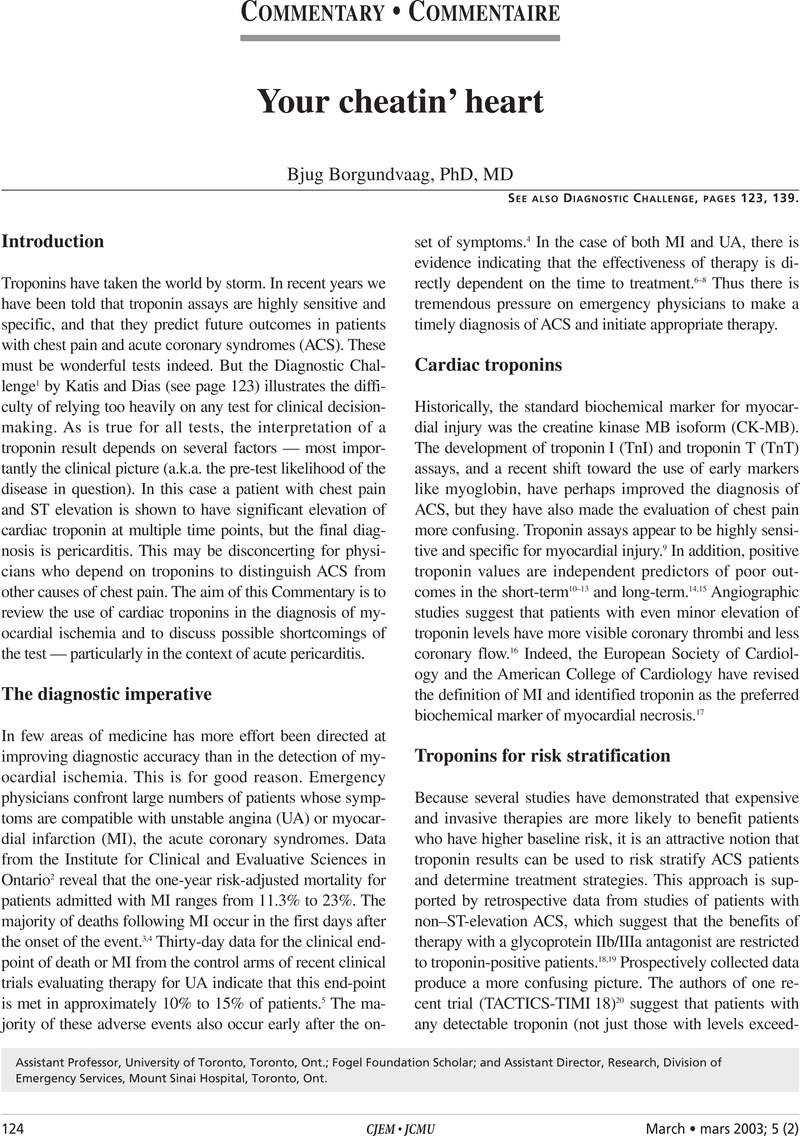Crossref Citations
This article has been cited by the following publications. This list is generated based on data provided by Crossref.
Lippi, Giuseppe
Montagnana, Martina
Salvagno, Gian Luca
and
Guidi, Gian Cesare
2006.
Potential value for new diagnostic markers in the early recognition of acute coronary syndromes.
CJEM,
Vol. 8,
Issue. 01,
p.
27.





